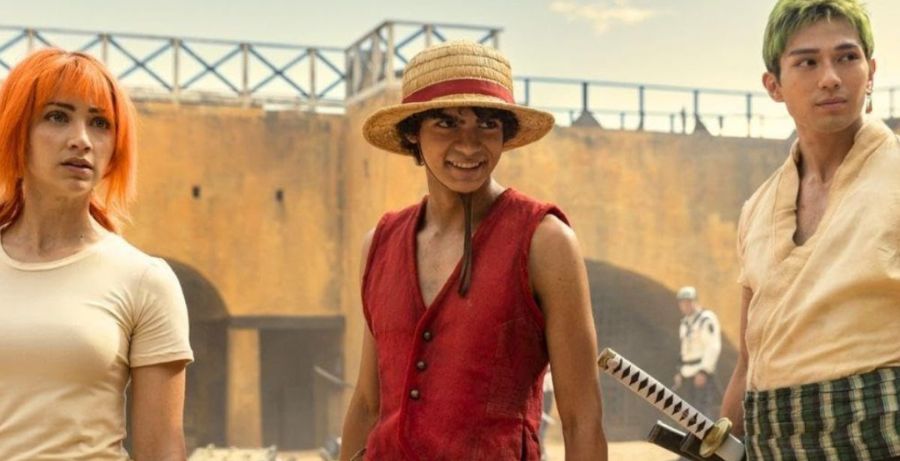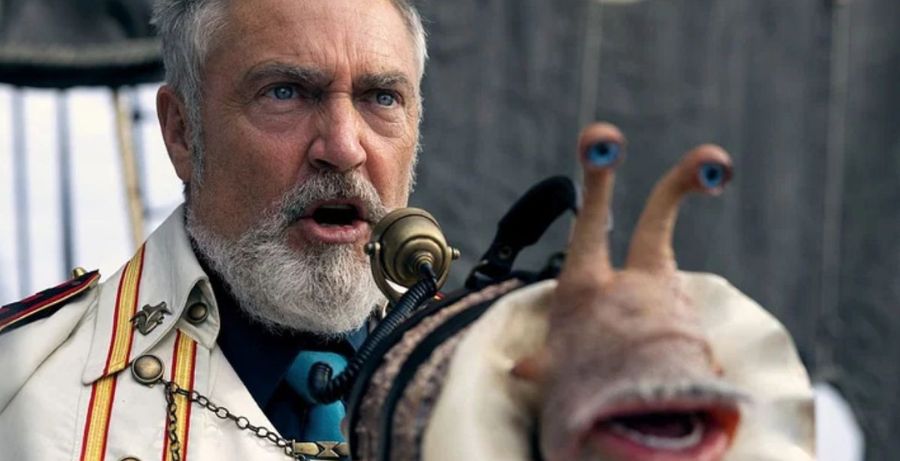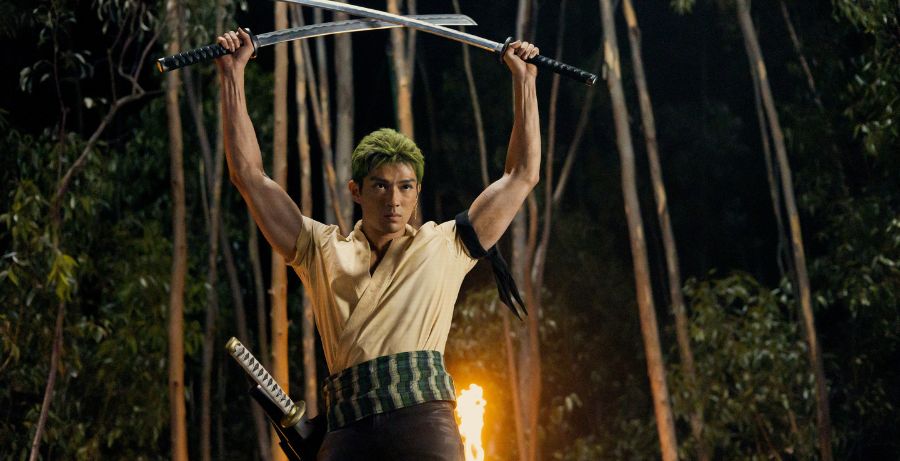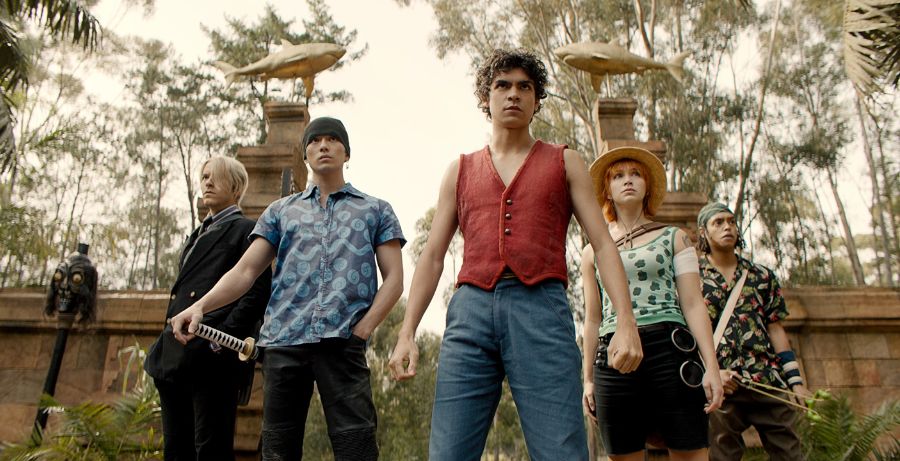SPOILER WARNING: This piece contains major spoilers for Season One of One Piece on Netflix
Taking on the monumental challenge of adapting an iconic series like Eiichiro Oda’s One Piece is no small feat. With over two decades of storytelling and a staggering number of episodes, the original anime and manga have woven a tapestry of adventure and friendship that has captured the hearts of fans worldwide. As a diehard One Piece fan, I had pretty high yet reasonable expectations for this live action adaptation.
Knowing that the One Piece creator would be involved gave me hope that this would not be like the many poorly done live action adaptations I have seen. Ever since the live-action adaptation was announced, there has been a discourse among fans on whether the series would be a hit or a flop. While I can not speak for all One Piece fans, I can at least speak for myself: this series is a hit!
Adapting a beloved and intricate series like Eiichiro Oda’s One Piece is a formidable challenge. Netflix’s One Piece live action adaptation demonstrates a commendable balance between creative changes and fidelity to the source material. By closely examining the adaptation’s faithfulness to the core themes and strategic narrative alterations, it successfully captures One Piece’s essence while reimagining it for a new medium.
What makes a good live-action adaptation

When most anime fans hear a series is getting a live-action, there is a mixture of dread and excitement. And who can blame them when we have films like Dragon Ball Evolution, Netflix’s Death Note, and Ghost in the Shell? However, just like there have been bad adaptations, there have been good, dare I even say great ones, such as Lupin III, Rurouni Kenshin, and Ace Attorney, to name a few successful adaptations.
Adapting any series, be it a book, comic book, cartoon, or anime, is a challenging feat in and of itself. However, after seeing my fair share of live-action adaptations, I believe any project needs three core things to succeed. Those things are reverence for the source material, the creator’s blessing and involvement, and flexibility. Thankfully, the One Piece contains all three of these things.
The showrunners Matt Owens and Steven Maeda are superfans of the source material, which shines through in every scene of this series. The attention to detail, from the set design to the characters’ wardrobe, is impeccable. Additionally, Eiichiro Oda was involved in making the show and even gave it his blessing. With One Piece being his most extensive series and life’s work, it makes sense that he would want to see the live action done right. Lastly, the creative team behind this series understood that they did not want to make something completely different from the source or try to ground it in real-world logic. *Stares in Dragon Ball Evolution.* Instead, this show fully leans into all of the lore and mythos of One Piece while making necessary changes and adjustments to tell the story.
Condensed Narrative

The most noticeable change in the One Piece live-action is its condensed storytelling. Season 1 of One Piece tackles the immense East Blue Saga. The saga covers the first 95 out of 100 chapters of the manga that continue various arcs. Remarkably enough, the first season covers all of the tale, except the Loguetown Arc, and streamlines the narrative while maintaining the essence of what makes One Piece special.
The show ensures they faithfully represent the source material by focusing on key arcs and moments in the saga that best represent the series at its core. However, the storytelling is flexible and takes some liberties in retelling the story in a slightly reimagined and refreshing way, which helps to streamline it. For example, some of the most noticeable changes are Luffy, Zoro, and Nami meeting at the marine base, Zoro’s swordfight with Mr. 7, and Vice Admiral Garp’s insistent pursuit of Luffy throughout the season. Additionally, there is Nami’s betrayal, Arlong’s attack at the Baratie, and Vice Admiral Garp and Chef Zeff’s conversation.
None of these happened in the show, as in the anime or manga. However, in the grand scheme, these changes do not drastically change the story or make it less entertaining. I found some of the changes added more depth to the story and helped build upon the foundation the source material laid over the years. For example, Garp and Zeff’s conversation with Zeff never happened anywhere in the series’ anime or manga. The interaction between the two characters was entirely original for this show. However, their conversation about the next generation embodies core themes from the series and adds more depth to the story.
While the live-action adaptation may not replicate every detail and moment from the source material, it captures the heart and soul of One Piece. The adaption retains the sense of adventure, the emotional bonds between the characters, and the exploration of themes like freedom and pursuing one’s true dreams.
Character Design Changes

The changes in the One Piece live action vary throughout its first season. Some are more noticeable than others, especially to diehard fans. Diving into changes to the characters’ designs, I mostly felt they were justified and made sense. Granted, some character design changes could have been executed better, but ultimately, they did not ruin the show. For example, diehard One Piece fans will notice that some distinctive features of some Straw Hat crewmembers are lacking, such as Ussop’s iconic long nose, Sanji’s curly eyebrows, and Luffy wearing shoes instead of sandals.
These small changes to the characters’ designs were practical and needed in a live action adaptation. Plenty of One Piece characters are known for their quirky features and traits. However, these changes felt more practical and helped not to make the characters look overly quirky or impractical. For example, Luffy is known for only wearing sandals most of the time. Given the amount of stunt work Iñaki Godoy had to perform as Luffy, it would have been dangerous to do so in sandals.
Fans of the series will also notice that the Straw Hat’s wardrobe goes through various changes throughout the season, some never before seen in the anime. That is because many outfits come from manga spreads and covers illustrated by Oda throughout the series. It would be impractical for Luffy and his friends to travel for days on end in the same clothes daily. Instead, the show presents a practical and creative way to pay homage to the manga.
Lastly, character design choices for Arlong and the fishmen were lacking but understandable. The fishmen in the anime and manga are depicted to be much larger than average humans, towering over by almost twice their size. Additionally, their appearance is meant to look more fish-like than human-like. However, although their designs did not meet my expectations exactly, I understand that the showrunners chose a more practical approach over a CGI effect, which I prefer and appreciate more.
Different but Faithful to the Source

Another divisive aspect of any adaptation is its faithfulness to the source material. The One Piece live action adaptation tried to stay true to the overarching story and capture the spirit of the series. However, it also took creative liberties, which is expected in any adaptation. These deviations worked in the adaptation’s favor, adding depth to certain characters and introducing fresh dynamics.
For instance, the portrayal of Garp’s relentless pursuit to dissuade Luffy from his pirate aspirations diverges from the original storyline. While it’s true that Garp initially attempted to steer his grandson away from the path of piracy during Luffy’s formative years, by the time Luffy was ready to embark on his journey, Garp had come to accept and even support his grandson’s ambitions, wishing for him to forge his path. The One Piece live action adaptation takes a distinct approach to reimagining this narrative arc and Garp’s character while still capturing the essence of Garp’s motivations and paternal feelings. The adaptation deepens Garp’s character further, contributing to a richer portrayal overall.
I am not saying that every fan will like or appreciate the changes the same way as I do. However, I hope One Piece and anime fans can enjoy the hard work and thoughtfulness showrunners Matt Owens and Steven Maeda put into this series. The One Piece live action is a shining example of successfully adapting an iconic series. As a fervent One Piece fan, my expectations were exceeded.
Through well-executed condensing of the narrative, character design adjustments, and faithful reinterpretations, the adaptation preserves the heart and soul of the original while offering a fresh perspective. This show honors the legacy of One Piece and shows that future adaptations can keep their source materials while crafting new narratives that captivate audiences in innovative ways.
Season One of the live-action One Piece series is available to watch now on Netflix.

